Nigeria is one of the countries that has adopted the lockdown of non-essential services as a strategy to slow the spread of the coronavirus disease (COVID-19). While this “stay at home measure†has been considered effective particularly in limiting the spread of the virus, it has come at a significant economic cost to several countries. Low-resource countries on the African continents are particularly the hardest hit.
To ease the burden of the lockdown on its citizens and enable some economic activities, the President of the Federal Republic of Nigeria, President Muhammadu Buhari pronounced on the of 27th April, 2020 the gradual easing of the lockdown instituted in the Federal Capital Territory, Lagos and Ogun States. This took effect from 4th May, 2020.
This is a phased approach for an initial period of two weeks. It aims at progressively returning life to normalcy with the goal of reviving the economy.
The ease-out pronouncement by Mr. President is characterised by the following measures:
1. Mandatory use of non-medical face mask/covering for all persons while in public spaces. Latex hand gloves should not be worn except for specific medical purposes
2. Mandatory provision of handwashing facilities/sanitisers in all public places
3. Restriction of all interstate travel except for essential travels & services, such as: transportation of agricultural products, petroleum products, relief items, goods, commodities related to the COVID-19 response and persons on essential duty
7. Physical distance of 2 metres between people in workplaces and public spaces must be maintained
10. Mandatory supervised isolation of person(s) arriving from outside the country for at least 14 days.
We urge all Nigerians to adhere to the afore-mentioned measures and continue to take responsibility in the fight against the disease. The Nigeria Centre for Disease Control will continue to provide evidence-based guidelines for Nigerians as the country gradually resumes social and economic activities.
Summary of Incidents
Notes
1. Information for this disease was retrieved from the Technical Working Group and Situation Reports
2. Case Fatality Rate (CFR) for this disease is reported for confirmed cases only
3. Information for this disease was retrieved from IDSR 002 data
4. CFR for this disease is reported for total cases i.e. suspected + confirmed
5. Information for sentinel influenza was retrieved from the laboratory
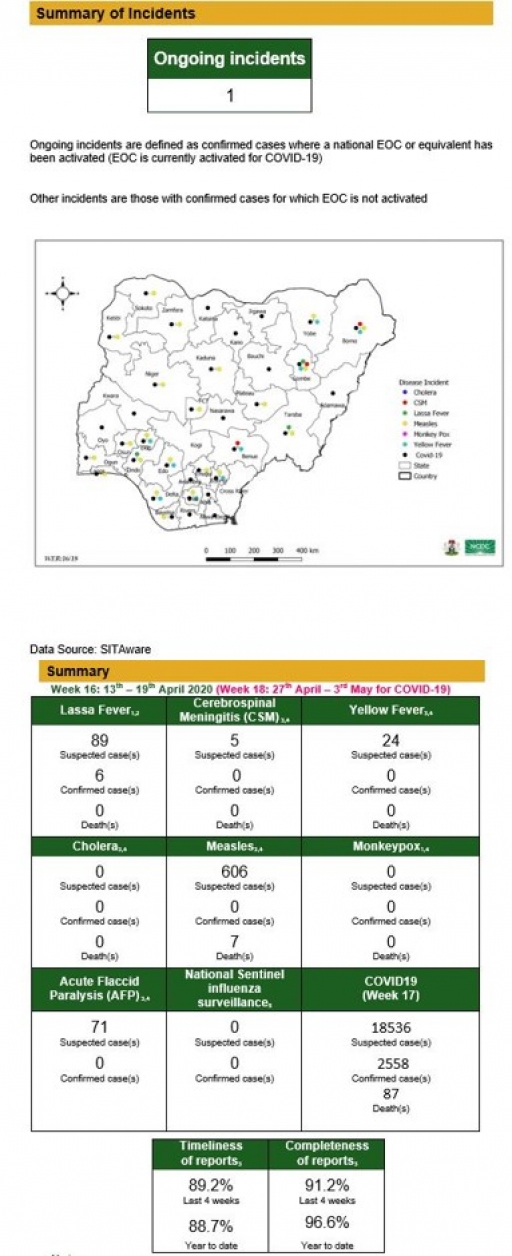
Lassa Fever
Key points
• There were 89 suspected cases, six confirmed cases and no death was recorded from three LGAs in three states
Actions
To date:
• National Rapid Response Teams (RRT) were deployed to ten states
• Surge staff (Doctors, Nurses, Laboratorians and Hygienist) have been deployed to Irrua Specialist Teaching Hospital (ISTH) and Federal Medical Centre (FMC) Owo
• The five molecular laboratories for Lassa fever testing in the NCDC network are working fully to ensure that all samples are tested and results provided within the shortest turnaround time
• The NCDC is working on how to support every state in Nigeria to identify one treatment centre, while supporting existing ones with care, treatment and IPC commodities
• Risk communications and community engagement activities have been scaled up across states using television, radio, print, social media and other strategies
• No new Healthcare worker was affected in the reporting week
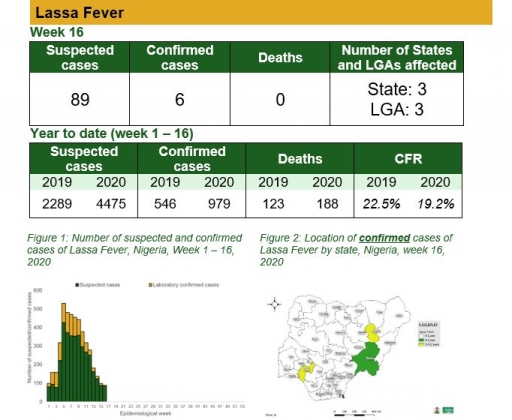
Cerebrospinal Meningitis (CSM)
Key points
There were five suspected cases of Cerebrospinal Meningitis (CSM) reported from five LGAs in three states (Borno – 1, Benue – 1 & Gombe – 3). None was laboratory confirmed and no death was recorded
Actions
To date:
• National CSM TWG meets weekly to review reports from states and plan appropriately
• Enhanced surveillance in all states
Planned:
• Continue harmonisation of the national line list and SORMAS data
• Continue to ensure that states reporting cases send their line lists and collect CSM samples
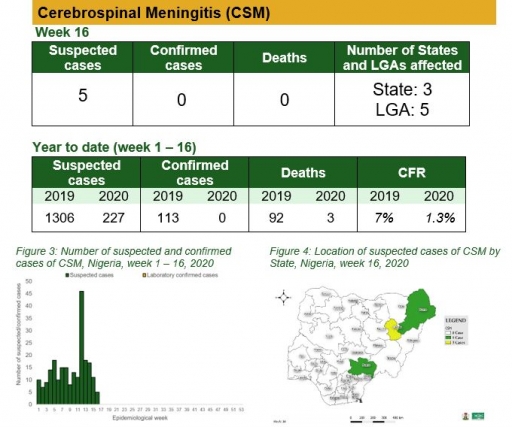
Yellow Fever
Key points
• There were 24 suspected cases of Yellow Fever (YF) reported from 17 LGAs in nine states. None was laboratory confirmed and no death was recorded
Actions
To date:
• National multiagency YF Technical Working Group (TWG) is coordinating response activities
Planned:
• Surveillance and laboratory data harmonisation are ongoing
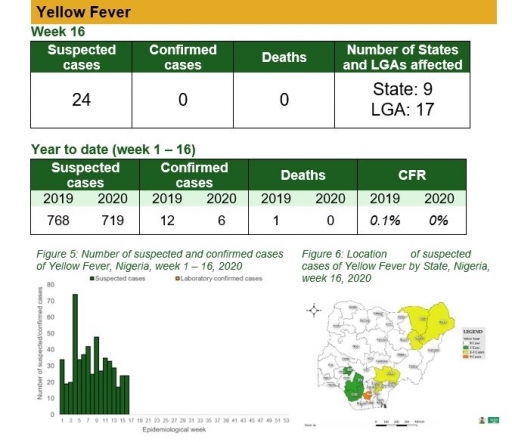
Cholera
Key points
• There was no suspected case of cholera reported this week
Actions
To date
• National cholera multi-sectoral Technical Working Group (TWG) is monitoring all states and supporting already affected states
Planned:
• Continue follow up and monitoring of previously non-reporting states
• Continue harmonisation of the national line list and SORMAS data
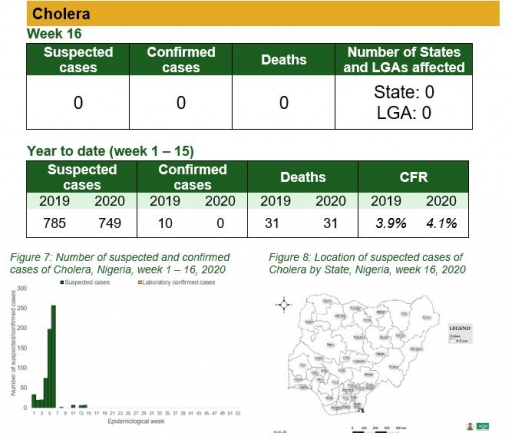
Measles
Key points
• There were 606 suspected cases of Measles reported from 104 LGAs in 21 states and FCT. None was laboratory confirmed and seven deaths were recorded
Actions
To date
• National Measles Technical Working Group (TWG) is closely monitoring surveillance data and response activities across the country
Planned:
• Intensify follow up with states to update and transmit line list
• Continue the review of measles surveillance data across the country
• Continue harmonisation of the national line list and SORMAS data
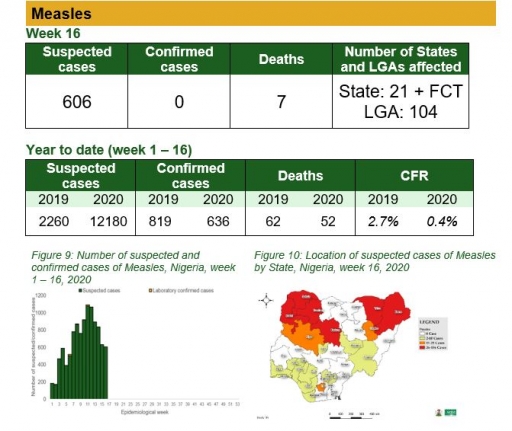
Monkeypox
Key points
• There was no suspected case of monkeypox reported this week.
Actions
To date
• National Monkeypox Technical Working Group (TWG) is monitoring activities in all states
Planned:
• Enhance surveillance for monkeypox in high burden states
• Continue harmonisation of the national line list and SORMAS data
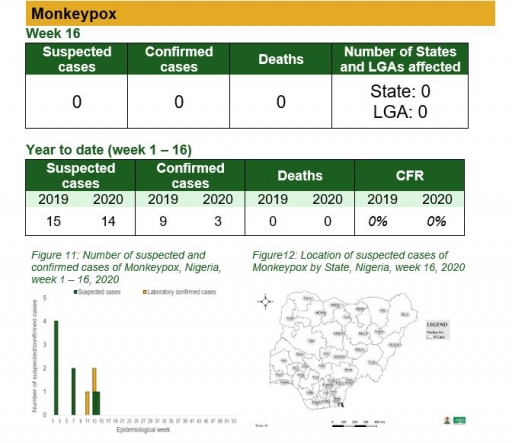
Acute Flaccid Paralysis (AFP)
Key points
• There were 71 suspected cases of AFP reported from 63 LGAs in 25 states and FCT. None was laboratory confirmed and no death was recorded
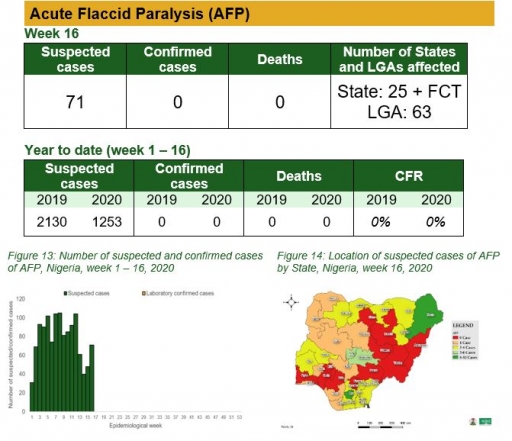
Coronavirus disease (COVID-19)
Actions
To date:
• National Emergency COVID-19 (LF) multi-partner, multi-sectoral Operations Centre (EOC) activated at level continues to coordinate response activities across states.
• National Rapid Response Team continues to support affected states. Surge RRT deployed to support Kano response
• Engagement meeting with health professional association sustain the gains of the lockdown as easing commences.
• Deployed Surveillance Outbreak Response Management and Analysis System (SORMAS) to states not using SORMAS but with COVID-19 cases
• Continues to deployed medical commodities to affected states
Planned:
• Continue mobilisation of resources
• Continue to establish surge capacities across all response pillars
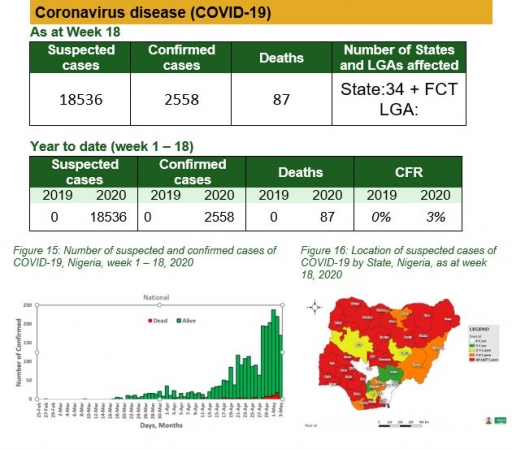
National Influenza Sentinel Surveillance
Key points
• The subtypes A seasonal H3, 2009A/H1N1 and A/not subtyped account for 0(0.0%), 2(9.5%) and 19 (90.5%) of the total influenza A positive sample, respectively. The subtypes B VICTORIA, B Not subtyped and B Yamagata account for 0(0.0%), 8(100%) and 0(0.0%) of the total influenza B positive samples respectively.
• The percentage influenza positive was highest in week 10 with 40%.
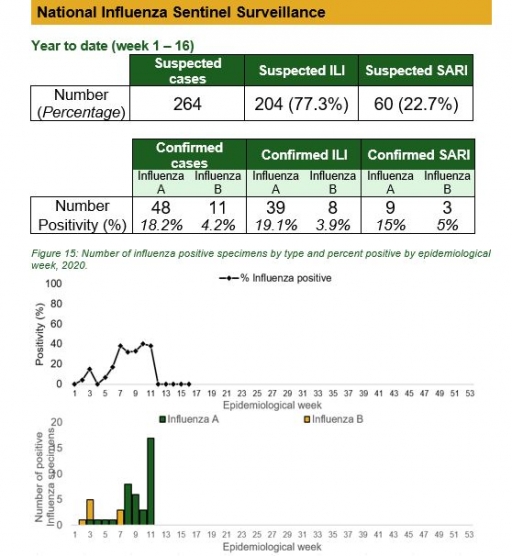
Timeliness and Completeness of Reports
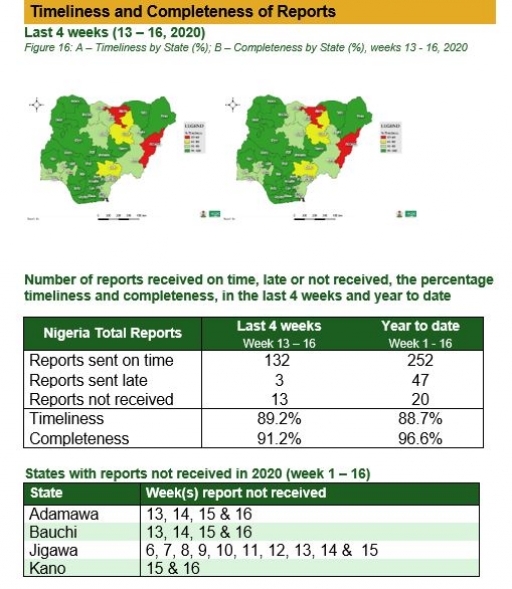
Timeliness and Completeness of Reports by State
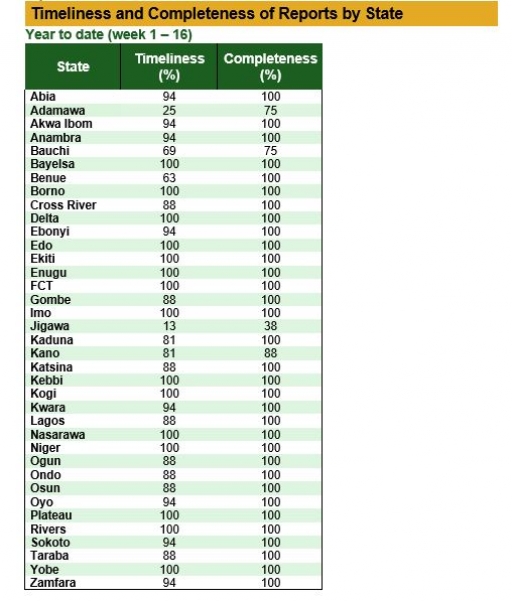














 Toll Free Number: 6232
Toll Free Number: 6232 Whatsapp: +234 708 711 0839
Whatsapp: +234 708 711 0839 SMS Number: +234 809 955 5577
SMS Number: +234 809 955 5577 